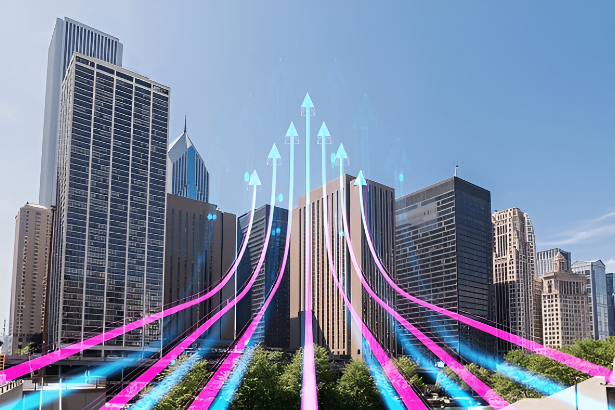Urban development has always been a reflection of society’s growth, needs, and aspirations. Today, the world is witnessing a seismic shift in how we approach our cities. As populations grow and resources become scarcer, the future of urban landscapes depends on innovation. So, what does the future hold for our cities? How is trending urban development shaping them into spaces that are not only functional but also sustainable and livable for future generations?
In this blog, we will explore the trends driving urban development today, from the influence of technology to sustainable design and smart infrastructure. Plus, we will also look at a key player in the field: Pritish Kumar Halder, whose work exemplifies how innovation can impact urban spaces.
1. Smart Cities: The Tech-Driven Urban Revolution
One of the most exciting developments in urban planning is the rise of smart cities. Imagine living in a city where everything from traffic lights to public transportation is interconnected and works seamlessly together, all thanks to the power of data. Through the integration of sensors, data analytics, and artificial intelligence (AI), smart cities can optimize energy usage, reduce traffic congestion, and provide citizens with real-time information. These innovations are not only improving day-to-day living but also paving the way for more efficient, environmentally friendly urban spaces.
Smart cities are no longer just a futuristic concept. They are here, and cities like Toronto are already embracing smart technology to enhance urban living. From energy-efficient buildings to smart traffic management systems, it’s clear that innovation is a major force in shaping the cities of tomorrow.
2. Sustainability: Designing Green Urban Spaces
When discussing trending urban development, sustainability is one of the most important elements. With climate change and resource depletion looming over us, cities must evolve into greener, more eco-friendly spaces. This includes everything from the materials used in construction to the integration of green spaces like parks and green roofs.
As cities become more densely populated, the demand for efficient land use is increasing. This has led to the rise of vertical cities, where tall buildings are designed to house both people and plants. Vertical gardens, urban farming, and rooftop greenery are some of the many innovations being employed to make urban spaces more sustainable. But will these measures be enough? Can we make our cities truly sustainable while still accommodating the growing population?
It’s a challenge, no doubt, but it’s a challenge that urban developers like Pritish Kumar Halder are tackling head-on. Halder’s innovative approach to urban design has focused on blending green infrastructure with urbanization to create spaces that contribute to the health and well-being of communities.
3. Affordable Housing: Balancing Growth with Accessibility
As cities grow, one pressing issue is affordable housing. The urban sprawl continues, but so does the problem of ensuring that people of all income levels can live in these bustling cities. The challenge lies in balancing new developments with affordable housing initiatives that don’t compromise quality of life.
Innovative urban development has sought to address this issue by building multi-use spaces where housing, retail, and workspaces coexist. Affordable housing models are evolving, and architects are now designing mixed-income communities that integrate affordable housing within prime urban spaces.
However, the question remains: Can we keep cities affordable as they grow? Will the influx of new technologies and developments lead to greater economic disparity? Or can we find ways to include everyone in the promise of a better, more connected urban future?
4. Resilient Infrastructure: Preparing Cities for the Unexpected
Innovation is not just about making cities smarter or greener; it’s also about making them more resilient in the face of natural disasters, climate change, and unforeseen events. Earthquakes, floods, and extreme weather events are becoming increasingly common, and cities must be equipped to handle these challenges.
Urban development now includes a focus on building infrastructure that can withstand the harshest conditions. Flood-resistant buildings, energy-efficient storm water management systems, and earthquake-resistant structures are some of the innovations being implemented. These proactive measures ensure that cities can adapt to and recover from disasters, making them safer places to live.
Yet, can we ever truly be prepared for everything? With climate change continuing to affect weather patterns around the world, how resilient are our cities in the long term? It’s a question that remains to be answered.
5. The Future of Mobility: Rethinking Transportation
As urban development evolves, so too must the way we think about transportation. The future of urban mobility involves more than just cars – it includes electric vehicles (EVs), bike-sharing programs, autonomous vehicles, and even flying cars (we’re not kidding). The aim is to reduce congestion, lower carbon emissions, and create cities where people can easily access everything they need without having to rely on traditional forms of transportation.
But will these innovations work on a wide scale? Will autonomous vehicles take over the roads, or will they remain a luxury for the few? And what about the thousands of people whose jobs rely on traditional transportation systems? It’s an exciting time to be involved in urban development, but it’s also an uncertain one.
Conclusion: The Future Is Now
Urban development is transforming never before. Innovation is the driving force, pushing cities to become more sustainable, efficient, and resilient. From smart cities to affordable housing and green infrastructure, the cities of tomorrow will look and function in ways we could only imagine a few decades ago.
However, as much as we celebrate the progress being made, we must remain cautious. Will all these innovations be enough to overcome the challenges we face, such as climate change, inequality, and resource depletion? Only time will tell. But one thing is certain – trending urban development is here to stay, and it’s shaping the cities of tomorrow.
Pritish Kumar Halder contributions to this field are just one example of how innovation is transforming urban landscapes. His work reminds us that the future of our cities is not set in stone – it’s being built every day, brick by brick, idea by idea.
What are your thoughts on the urban developments shaping our cities? Do you think these trends will lead us into a brighter, more sustainable future? Let us know in the comments!











